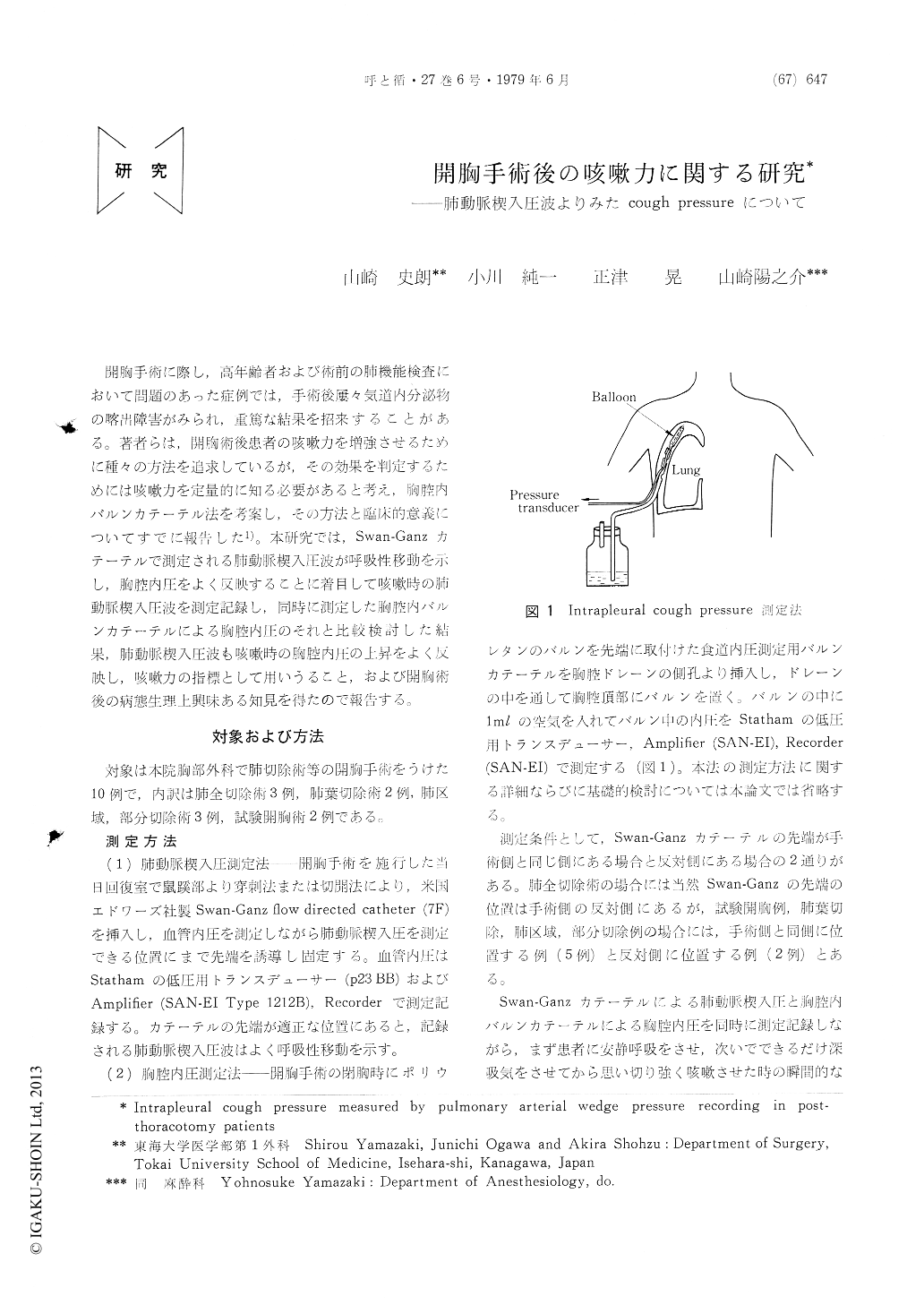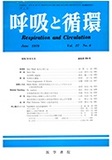Japanese
English
- 有料閲覧
- Abstract 文献概要
- 1ページ目 Look Inside
開胸手術に際し,高年齢者および術前の肺機能検査において問題のあった症例では,手術後屡々気道内分泌物の喀出障害がみられ,重篤な結果を招来することがある。著者らは,開胸術後患者の咳嗽力を増強させるために種々の方法を追求しているが,その効果を判定するためには咳嗽力を定量的に知る必要があると考え,胸腔内バルンカテーテル法を考案し,その方法と臨床的意義についてすでに報告した1)。本研究では,Swan-Ganzカテーテルで測定される肺動脈楔入圧波が呼吸性移動を示し,胸腔内圧をよく反映することに着目して咳嗽時の肺動脈楔入圧波を測定記録し,司時に測定した胸腔内バルンカテーテルによる胸腔内圧のそれと比較検討した結果,肺動脈楔入圧波も咳値嗽時の胸腔内圧の上昇をよく反映し,咳嗽力の指標として用いうること,および開胸術後の病態生理上興味ある知見を得たので報告する。
We measured intrapleural pressure and pulmo-nary arterial wedge pressure simultaneously during quiet breathing and coughing in 10 post-thoracotomy patients using a balloon-tipped catheter in the pleural space of thoracotomy side and a Swan-Ganz flow-directed catheter in the ipsilateral or contralateral pulmonary artery.
It was found that the pulmonary arterial wedge pressure during quiet breathing and coughing reflects closely the intrapleural pressure, and that the peak value of the pulmonary arterial wedge pressure at coughing reduced by the mean wedge pressure value during quiet breathing represents the intrapleural peak pressure. Therefore we feel that the pulmonary arterial wedge pressure tracing might be an acceptable alternative to the intrapleural balloon method or intraesophageal balloon method for measuring intrapleural cough pressure.

Copyright © 1979, Igaku-Shoin Ltd. All rights reserved.


